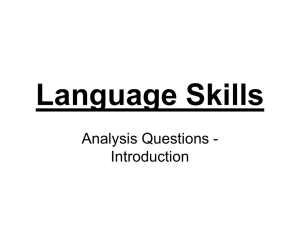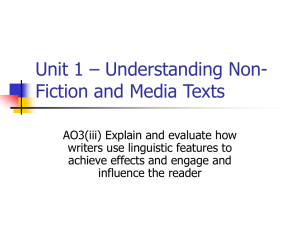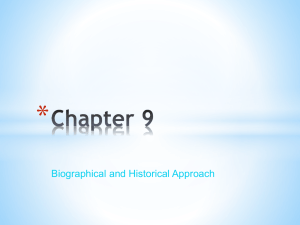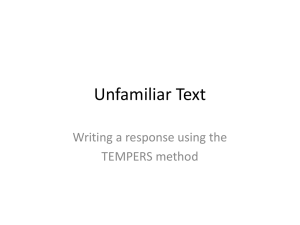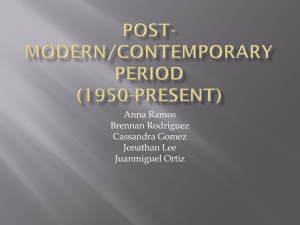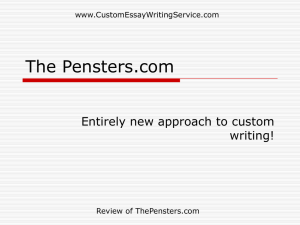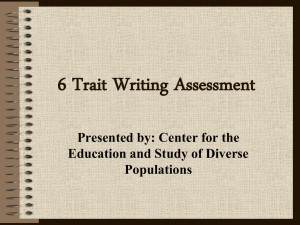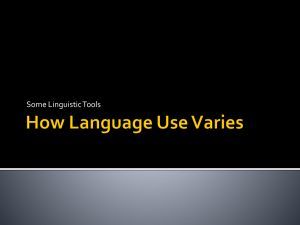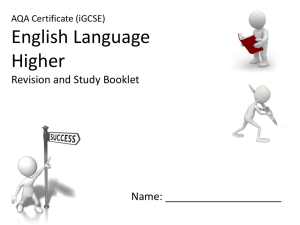ACTAAP Writing ppt
advertisement
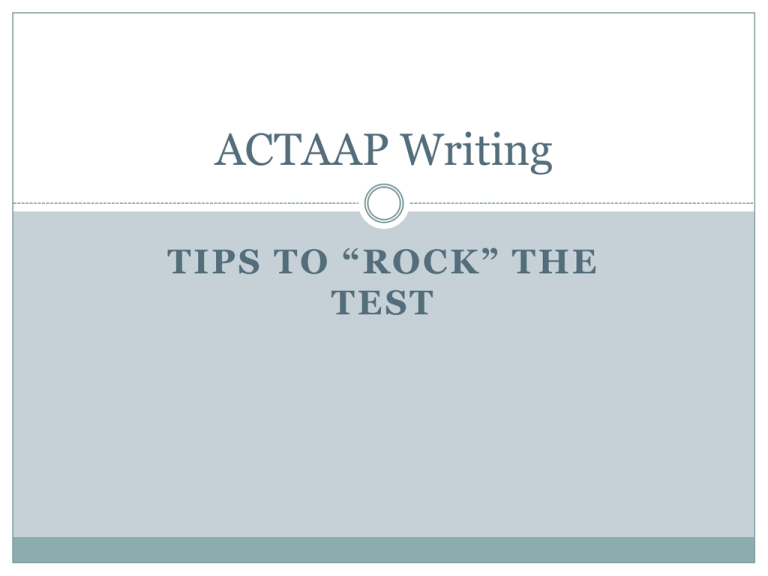
ACTAAP Writing TIPS TO “ROCK” THE TEST Two Types of Writing on EOC Responses to reading Open Response Questions Responses to writing Topics Scoring Procedures for Open-Response Questions Scores range from “0” to “4,” with “4” being the best. All student responses to the Grade 11 Literacy Examination open-response test items are scored independently by two readers. Those two scores are compared, and responses that receive scores that are non-adjacent (a “1” and a “3,” for example) are scored a third time by a Team Leader or the Scoring Director for resolution. Responses to reading Open Response Questions Students will be asked to read a passage or passages. Students will then be asked to respond to what they have read in writing. For example: Describe a conflict presented in the passage. Explain how the conflict is resolved. Provide two examples from the passage to support your response. Students will be provided with a rubric that will show what will merit the highest score possible. SCORE DESCRIPTION Example Rubric The response describes a conflict of the passage, explains how the conflict is resolved, and provides two examples from the passage to support the response. The response describes a conflict of the passage, explains how the conflict is resolved, and provides one example from the passage to support the response. OR The response describes a conflict of the passage and provides two examples from the passage to support the response. OR The response explains how the conflict is resolved and provides two examples from the passage to support the response. The response describes a conflict of the passage and explains how the conflict is resolved. OR The response describes a conflict of the passage and provides one example from the passage to support the response. OR The response explains how the conflict is resolved and provides one example from the passage to support the response. The response describes a conflict of the passage. OR The response explains how the conflict is resolved. The response is totally incorrect or irrelevant. There is no evidence that the student understands the task, or the response may be off-topic. B Blank—No Response. A score of “B” will be reported as “NA.” (No attempt to answer the item. Score of “0” assigned for the item.) Domains for Open Response Writing is graded in five different areas called “domains”: 1. 2. 3. 4. 5. Style Content Usage Mechanics Sentence Formation Domains are Great! All these different domains are great because they give you more opportunities to succeed! Domain 1: STYLE Divisions Selected Vocabulary Selected Information Style Tone Voice Questions asked when scoring STYLE: Is the vocabulary and information selected to influence the reader? Is vocabulary precise/specific, and is it suited to the writer’s purpose? Does the writer create images for the reader? Are a variety of sentences used to enhance the writer’s points and to create reader interest? Does the writer’s voice emerge through the selected vocabulary and information? More questions about STYLE: Is there an appropriate tone created with all the features working together? Does the writer control these features consistently or just some of the time? What level of control of all features within the domain of STYLE does the writer demonstrate? Domain: STYLE Consistent Control (score of 4) Selected Vocabulary •purposeful selection with audience in mind •precise, specific •suits the writer’s purpose and topic •creates images for the reader sustained throughout Selected Information •purposeful selection of details to affect reader •creates images for the reader (“Dentyne” rather than “gum”) sustained throughout Sentence Variety •sentences have a variety of beginnings and lengths •different sentence structures create an interesting reading Tone •an attitude is conveyed through selected vocabulary and information •maintained throughout •tone does not shift •appropriate for the piece Voice •strong writer’s voice •reader can get a picture of the writer Domain 2: CONTENT Central idea Elaboration Unity Organization Questions asked when scoring CONTENT: Is the central idea clear and does the student maintain the focus? Are there details that five a clear idea of the student’s message? Does the writer leave some questions unanswered? Are all ideas in the essay elaborated or did the student elaborate only some of the ideas? More questions about CONTENT: Are all the details supporting the central idea? Does everything hang together? Is the essay cohesive? Is there an organizational plan or has the writer jumped around? What level of control of all features within the domain of CONTENT does the writer demonstrate? Domain: Content Consistent Control (score of 4) Central Ideas •clear central idea •apparent to reader •adhered to throughout piece Elaboration •writer has included • details so that reader gets a clear idea of message •elaboration for a narrative fills in the steps in the sequence •even elaboration (not just one of the ideas elaborated) Unity •all elaboration focused on central idea presence of closure •more mature writers will close the entire piece (less mature writers will close their last thought) •consistent point of view •piece hangs together Organization •clear organization •can tell there is a plan in effect •sequential for a narrative piece •writers may clump ideas in expository pieces •clear progression of ideas Domain 3: SENTENCE FORMATION Completeness Absence of Fused Sentences (run-ons, comma splices) Expansion through Coordination and Modifiers Embedding through Standard Subordination and Modifiers Standard Word Order Questions asked about SENTENCE FORMATION: Are all sentences complete or are there fragments? Are there sentences with words out of order? Has the writer made use of clauses, coordinating conjunctions, series, adjectives, adverbs so that he/she demonstrates the ability to construct different types of sentences. More questions asked about SENTENCE FORMATION: What has the writer done well in relation to what he/she has done poorly. What level of control of all features within the domain of FORMATION does the writer demonstrate? Domain: SENTENCE FORMATION Consistent Control (score of 4) Completeness Non-enjambment •control of a variety of sentence structures Expansion through standard coordination and modifiers •ideas are combined and embedded with skill •fragments may be used for effect •does not have to be perfect Embedding through standard subordination and modifiers Domain 4: USAGE Standard Inflections Agreement Word Meaning Conventions Questions asked when scoring USAGE: Does the writer control inflections: noun and verb endings? Does the writer control subject/verb and pronoun/antecedent agreement? Is verb tense consistent and accurate throughout? More questions about USAGE: Has the writer chosen the correct words to fit the meaning in the sentences or are there inaccurate word choices? What has the writer done well in relation to what he/she has done poorly? What level of control of all features within the domain of USAGE does the writer demonstrate? Domain: USAGE Consistent Control (score of 4) Standard inflections (plurals, possessives, -ed, -ly, etc.) •all the features are handled well Agreement •does not have to be perfect Word meaning Conventions Domain 5: MECHANICS Capitalization Punctuation Formatting Spelling Questions asked when scoring MECHANICS: Does the writer have control of capitalization? Does the writer have control of punctuation? Does the writer format correctly? Does the writer have control of spelling? Misspelling more difficult words is less important than a pattern of misspelling basic words such as “a lot.” More questions asked when scoring MECHANICS: What has the writer done well in relation to what he/she has done poorly? Mechanics offers the greatest opportunity to make errors OR show skills! What level of control of all features within the domain of MECHANICS does the writer demonstrate? Domain: MECHANICS Consistent Control (score of 4) Capitalization •all the features are handled well Punctuation Formatting Spelling •does not have to be perfect

